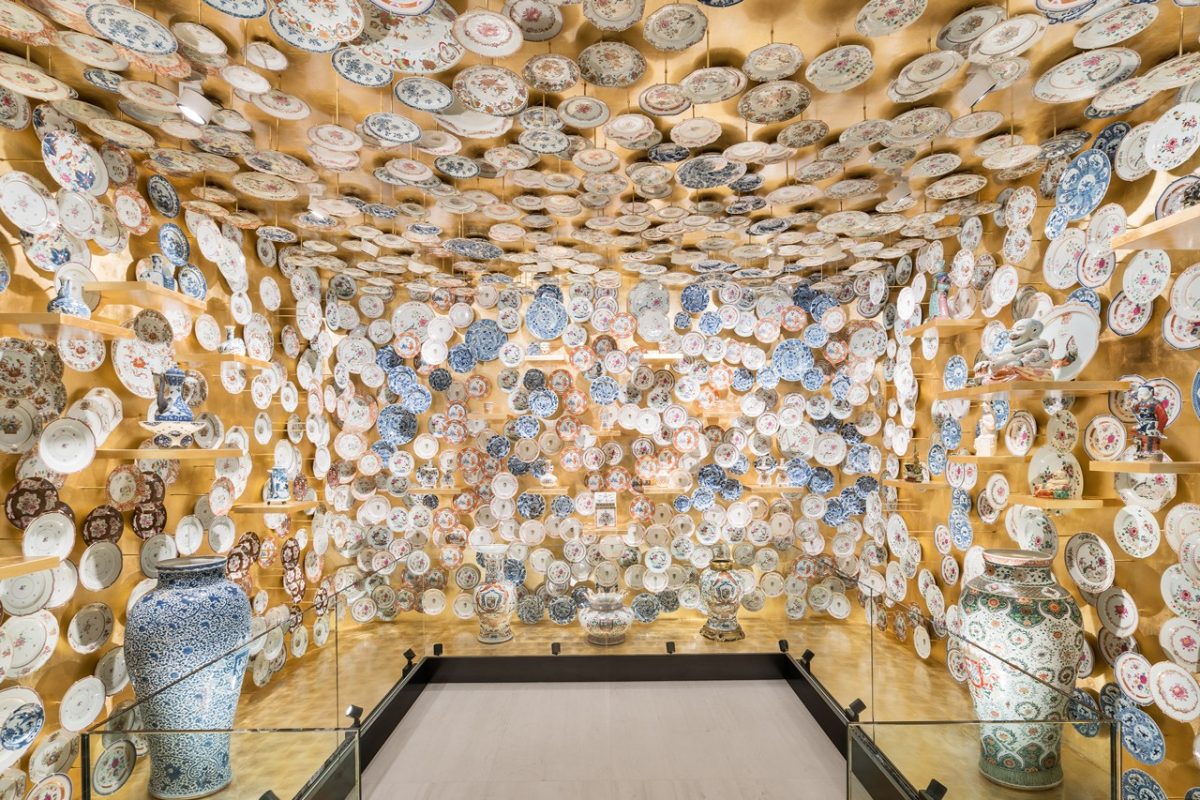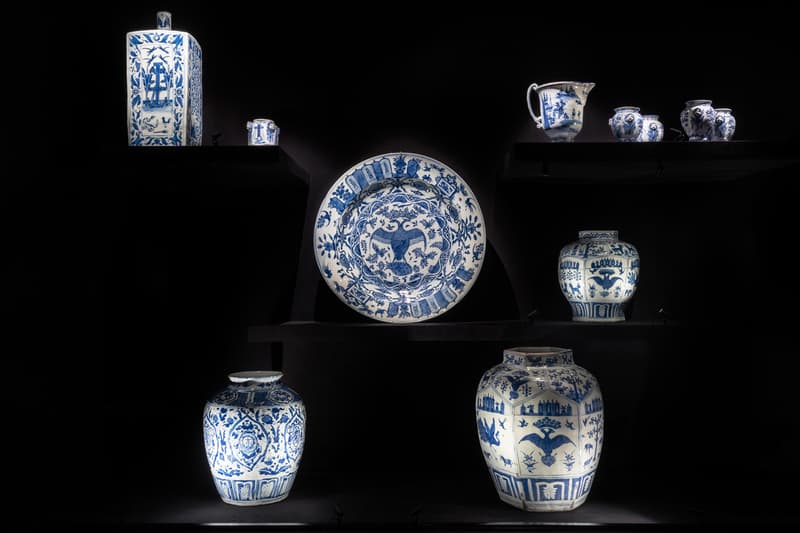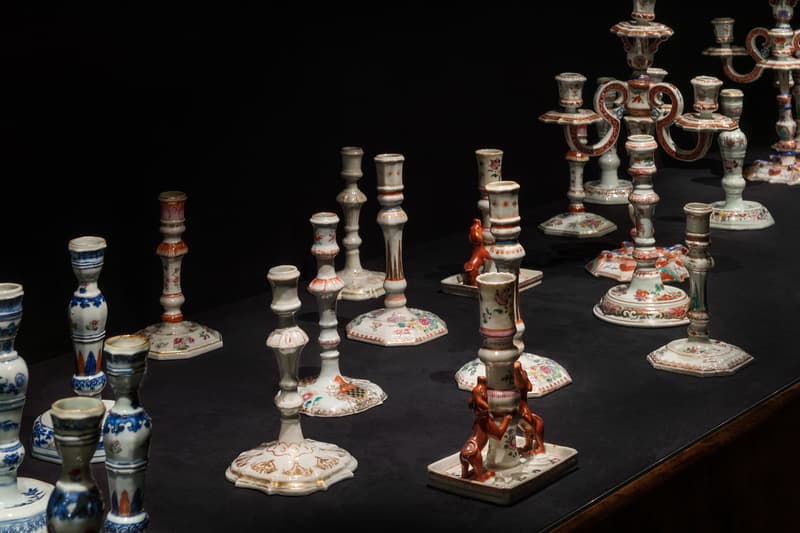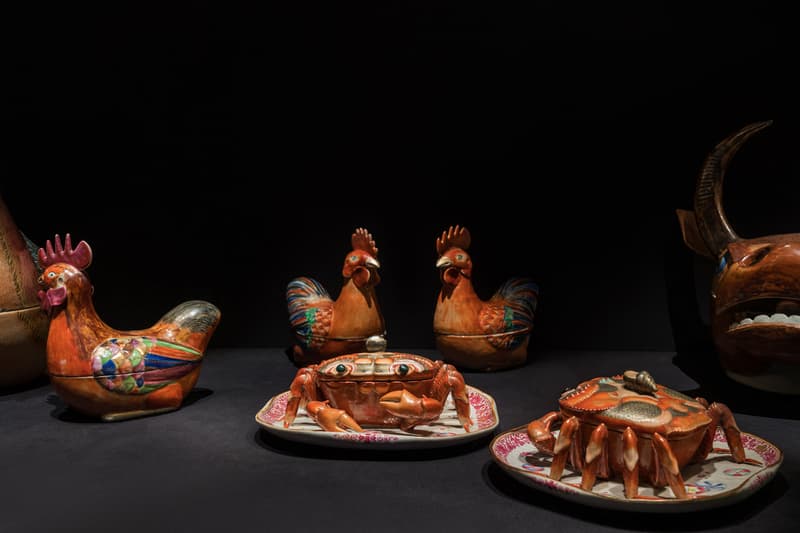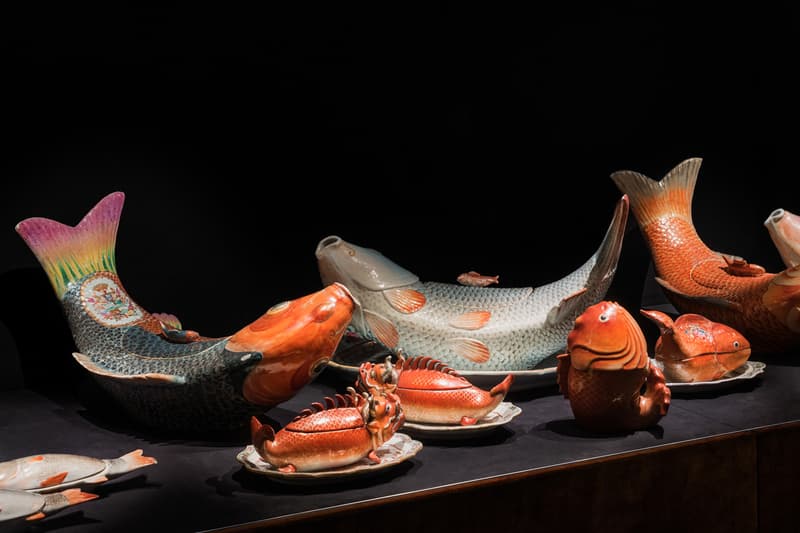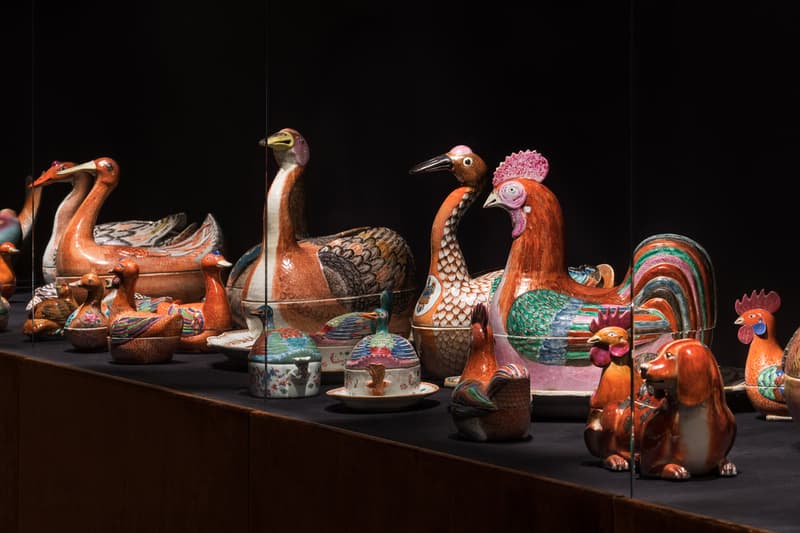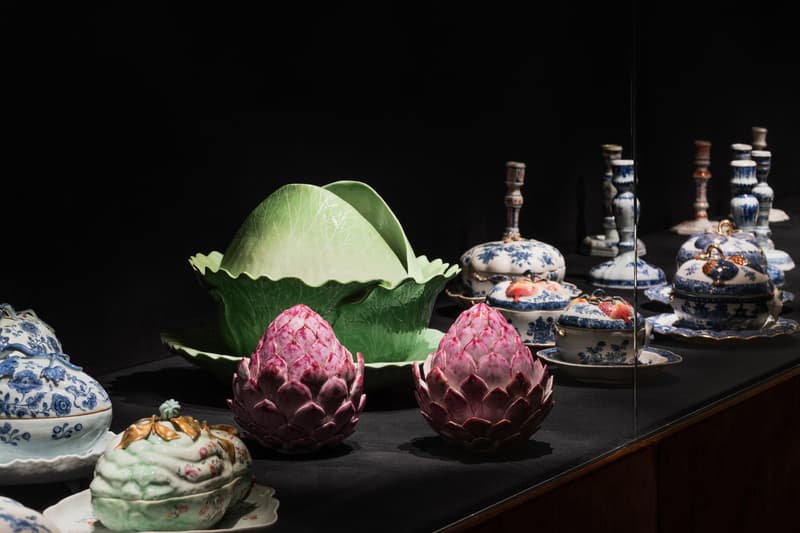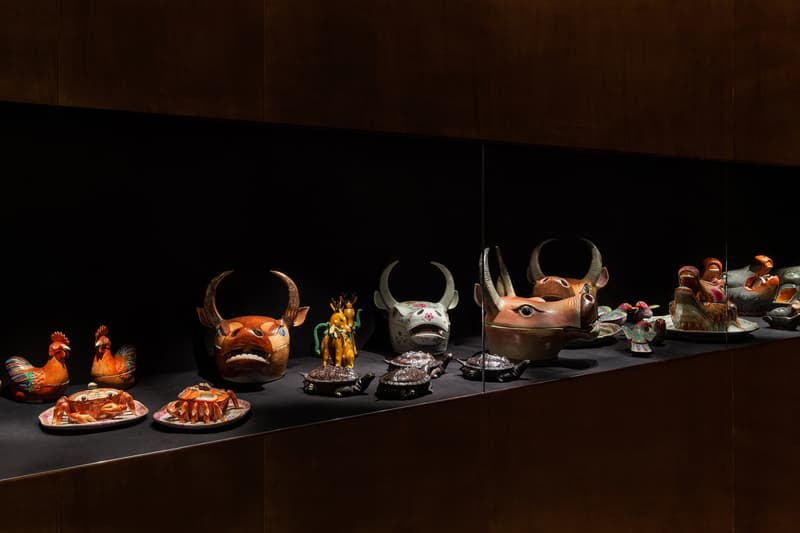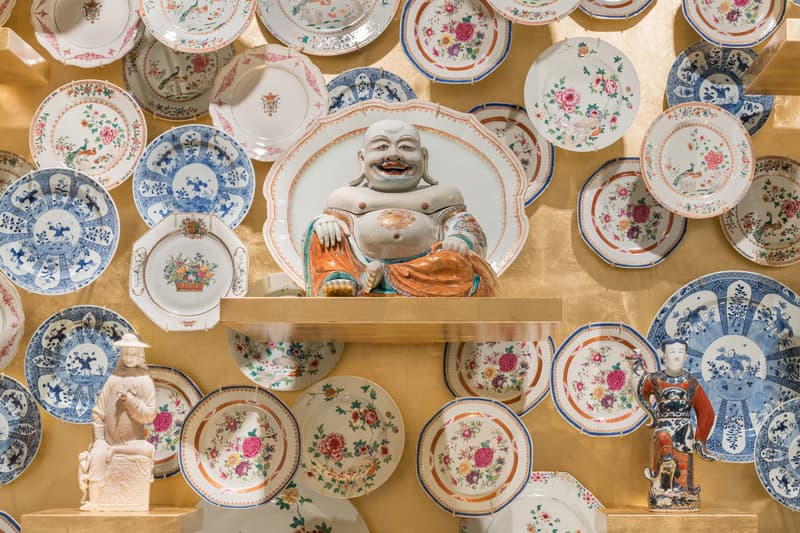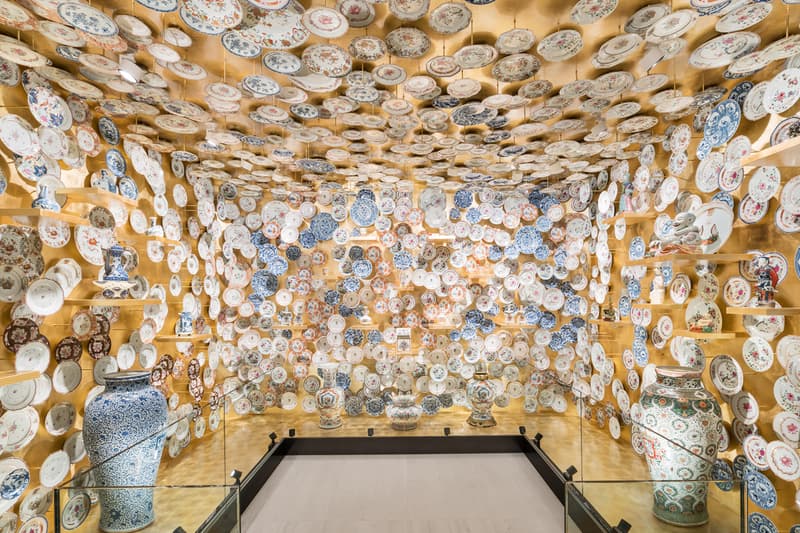Milan’s Fondazione Prada is exploring the historical context, scope and impact of Chinese export porcelain with its latest exhibition, entitled “The Porcelain Room.” With more than 1,700 individual porcelain pieces made from the 16th to 19th century on show, the exhibition reveals how the Chinese were able to understand the taste and demand of each segment of the market and tailor their production accordingly.
The first part of “The Porcelain Room” features the commissions of Chinese porcelain by the Portuguese after they arrived in China. In the early 16th century, these “first orders” dominated the trade between China and Europe and were the first to be decorated with Western iconography. Only 150 of these extremely rare works survive to this day; over 45 examples are on view at Fondazione Prada. The second part features daily use objects resembling animals, fruit, and vegetables. Created around the 1760s, these ceramic items explore the impact and exoticism of Chinese tableware made for Western markets.
Finally, the last part pays homage to the tradition of porcelain rooms created in European palaces and aristocratic houses in the 17th and 18th centuries. Among mirrors, lacquer panels and gilded carved wood, the display references the decadent rooms that used Chinese porcelain as a way to transport visitors to “distant cultures and lands.”
Take a look inside “The Porcelain Room” in the slideshow above. The exhibition is on view to the public from now until September 28.
Elsewhere in art, snipe1 will hold his first-ever solo exhibition in the US at LA’s Avenue des Arts.
Fondazione Prada
Largo Isarco 2
Milan, Italy 20139

